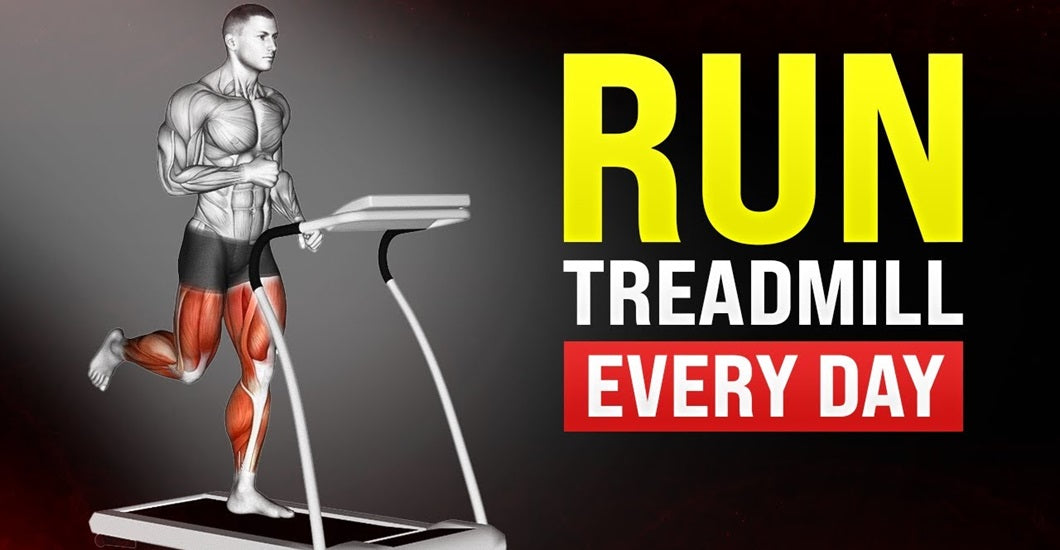In the intricate tapestry of human health, the significance of effective fat-burning cannot be overstated. Beyond its aesthetic implications, the process of metabolizing fat plays a crucial role in maintaining a harmonious balance within the body. Excessive adipose tissue has been associated with a spectrum of health concerns, ranging from cardiovascular diseases to metabolic disorders. Thus, understanding and actively promoting the mechanisms that facilitate healthy fat metabolism become fundamental for fostering overall well-being.
Against the backdrop of health-conscious endeavors, the treadmill emerges as a quintessential fixture in the realm of fitness. Its ubiquitous presence in gyms and homes alike prompts a critical question: does the treadmill, truly catalyze fat burning?
In the exploration that follows, we navigate through the intricate interplay of fat metabolism, cardiovascular exercise, and the specific dynamics of treadmill workouts. By dissecting the science behind fat burning and assessing the treadmill's role in this process, we aim to shed light on the efficacy of this popular exercise modality in the pursuit of a healthier, more balanced lifestyle.
How To Burn Fat?
How the Body Burns Fat for Energy?
The human body is a complex biological system constantly in need of energy to sustain its functions. One primary source of this energy is fat, stored in adipose tissue throughout the body. The process of burning fat for energy, known as lipolysis, involves breaking down triglycerides into fatty acids and glycerol. This intricate biochemical process occurs within the mitochondria of cells, where fatty acids undergo beta-oxidation to produce adenosine triphosphate (ATP).
How does Exercise Promote Fat Metabolism?
Regular physical activity is a cornerstone in the endeavor to burn fat and achieve a healthier body composition. Exercise stimulates the metabolic rate, creating an increased demand for energy. To meet this demand, the body taps into its fat stores, utilizing fatty acids as a fuel source.
The intensity and duration of exercise play pivotal roles in determining the extent to which fat is mobilized for energy production. Furthermore, consistent exercise contributes to improved insulin sensitivity, enhancing the body's ability to regulate blood sugar levels and manage fat storage.
Aerobic vs. Anaerobic Exercise and Their Impact on Fat Burning
Aerobic and anaerobic exercises represent two distinct modalities with varying effects on fat metabolism. Aerobic exercise, characterized by sustained and rhythmic activities such as jogging, swimming, or cycling, engages the cardiovascular system and enhances oxygen utilization. This prolonged activity encourages the body to rely on fat as a primary energy source.
In contrast, anaerobic exercise, which includes high-intensity, short-duration activities like weightlifting or sprinting, primarily utilizes carbohydrates for energy. However, the afterburn effect, known as excess post-exercise oxygen consumption (EPOC), prompts continued calorie and fat burning even after anaerobic exercise has concluded.
Balancing both aerobic and anaerobic exercises within a comprehensive fitness routine allows individuals to optimize fat metabolism, contributing to weight management and overall health.

Treadmill as a Cardiovascular Exercise
The treadmill stands as a ubiquitous and widely used cardiovascular exercise machine in fitness centers, homes, and rehabilitation settings. Its popularity stems from its simplicity, accessibility, and versatility, making it an attractive option for individuals of varying fitness levels. The rhythmic motion of walking, jogging, or running on the treadmill engages major muscle groups and elevates heart rate, positioning it as an effective tool for cardiovascular exercise.
How Cardiovascular Exercise Contributes to Fat Burning?
Cardiovascular exercise, including treadmill workouts, plays a pivotal role in promoting fat-burning through several mechanisms. As the heart rate increases during aerobic activities, the body's demand for energy rises, prompting the utilization of stored fat as a primary fuel source. This sustained effort enhances metabolic rate, leading to a more efficient calorie expenditure both during and after the exercise session. Additionally, cardiovascular exercise contributes to improved insulin sensitivity, positively influencing the body's ability to regulate blood sugar levels and manage fat storage over time.
The Intensity and Duration Required for Effective Fat Burning on a Treadmill
The effectiveness of fat-burning on a treadmill is influenced by the intensity and duration of the workout. Moderate to high-intensity treadmill sessions, where the heart rate is elevated within the target zone for an extended period, prove most effective for fat metabolism. Longer durations contribute to a greater overall calorie expenditure, while the intensity determines the ratio of calories derived from fat versus carbohydrates. Incorporating interval training, alternating between periods of higher and lower intensity, can further enhance the fat-burning potential of treadmill workouts.
Benefits of Treadmill Workouts for Fat Loss
Improved Cardiovascular Health
Engaging in regular treadmill workouts contributes significantly to cardiovascular health. The sustained aerobic activity involved in treadmill exercises strengthens the heart, enhances circulation, and improves overall cardiovascular function. As the heart becomes more efficient, it can pump blood more effectively, delivering oxygen and nutrients to muscles, including those involved in fat metabolism.
Increased Caloric Expenditure
Treadmill workouts facilitate a higher caloric expenditure, making them effective for individuals aiming to burn fat and manage weight. The combination of cardiovascular exercise and the engagement of major muscle groups during treadmill activities results in substantial energy demand. This, in turn, promotes the utilization of stored fat for fuel, contributing to a negative energy balance conducive to fat loss.
Enhanced Metabolic Rate
Regular treadmill exercise can lead to a sustained increase in metabolic rate, even beyond the immediate post-workout period. This phenomenon, known as the afterburn effect or excess post-exercise oxygen consumption (EPOC), causes the body to continue burning calories and fat to restore oxygen levels and repair tissues. As a result, treadmill workouts offer a prolonged and beneficial impact on metabolic rate, aiding in fat loss efforts.
Convenient and Accessible
Treadmills provide a convenient and accessible means of incorporating physical activity into one's routine. Whether at home or in a gym, individuals can easily hop on a treadmill for a workout, eliminating barriers such as weather conditions or the need for specialized equipment. This accessibility encourages consistency in exercise routines, a crucial factor in achieving and maintaining fat loss goals.
Customizable Intensity and Variety
Treadmill workouts offer a high degree of customization, allowing individuals to tailor the intensity and variety of their exercise sessions. By adjusting speed, and incline, and incorporating interval training, users can challenge themselves and keep workouts engaging. This variability not only prevents monotony but also optimizes fat-burning potential by targeting different energy systems and muscle groups.
Psychological and Emotional Benefits
Beyond the physical advantages, treadmill workouts contribute to psychological and emotional well-being. Regular exercise, including treadmill sessions, is associated with the release of endorphins, which can improve mood and alleviate stress. This positive mental state can indirectly support fat loss efforts by reducing emotional eating and promoting a more mindful approach to nutrition.

Tips for Effective Fat Burning on a Treadmill
Guidance on Optimizing Treadmill Workouts for Fat Loss
- Set Realistic Goals: Establish achievable fat loss goals that consider your current fitness level and gradually increase intensity over time.
- Use Incline: Incorporate incline settings to simulate uphill terrain, engaging different muscle groups and intensifying the workout, thereby increasing calorie and fat burn.
- Maintain Proper Form: Ensure proper posture and technique to prevent injuries and maximize the effectiveness of each stride.
- Consistent Pace: Maintain a consistent and challenging pace throughout the workout to sustain an elevated heart rate and encourage fat metabolism.
- Utilize Handrails Sparingly: Minimize reliance on handrails to engage core muscles and promote a more effective calorie burn.
Incorporating Interval Training and Varied Workout Routines
- High-Intensity Interval Training (HIIT): Integrate intervals of high-intensity running or sprinting followed by periods of active recovery or lower intensity. This approach maximizes calorie burn and promotes the afterburn effect.
- Varied Speed and Duration: Mix up your treadmill routine by incorporating sessions with varying speeds and durations. This prevents adaptation and challenges the body, enhancing fat loss.
- Incorporate Hills: Include hill workouts by adjusting the incline. This engages different muscle fibers and increases the metabolic demand, promoting effective fat burning.
- Cross-Training: Combine treadmill workouts with other forms of cardiovascular exercise or strength training to provide a well-rounded approach to fat loss.
Combining Exercise with a Healthy Diet for Optimal Results
- Balanced Nutrition: Adopt a balanced diet with a mix of lean proteins, complex carbohydrates, and healthy fats to support energy levels and overall health.
- Hydration: Stay adequately hydrated, as water is essential for various metabolic processes, including fat metabolism.
- Meal Timing: Consider the timing of your meals about your treadmill workouts. Consuming a balanced meal or snack before exercising can provide the necessary energy.
- Portion Control: Practice portion control to manage calorie intake, complementing the efforts of your treadmill workouts.
- Choose Nutrient-Dense Foods: Opt for nutrient-dense foods that provide essential vitamins and minerals without excess calories, promoting overall health and well-being.

Conclusion
From its undeniable status as a versatile and accessible cardio exercise machine to its role in enhancing cardiovascular health, the treadmill emerges as a valuable tool in the pursuit of a healthier lifestyle. The rhythmic cadence of each step on the treadmill not only engages major muscle groups but also propels the body into a state of heightened metabolic activity, where fat becomes a primary source of fuel.
The science behind fat metabolism underscores the importance of regular exercise, and the treadmill proves to be an effective catalyst in this process. Whether through sustained moderate-intensity sessions or the dynamic challenges of interval training, the treadmill offers a platform for individuals to optimize fat burning, contributing to weight management and improved fitness.






Leave a comment
All comments are moderated before being published.
This site is protected by hCaptcha and the hCaptcha Privacy Policy and Terms of Service apply.